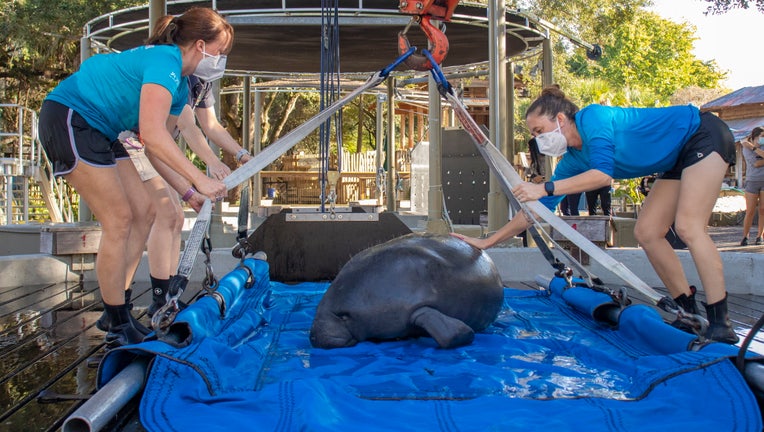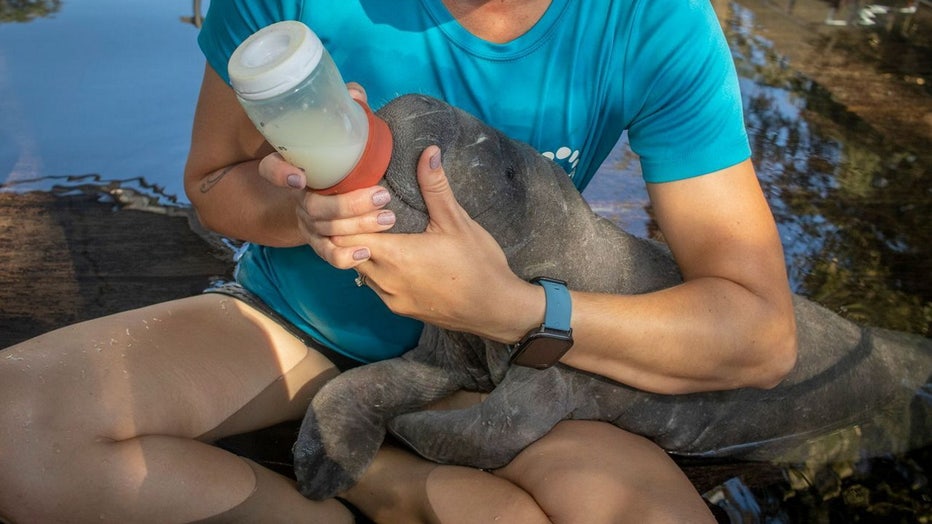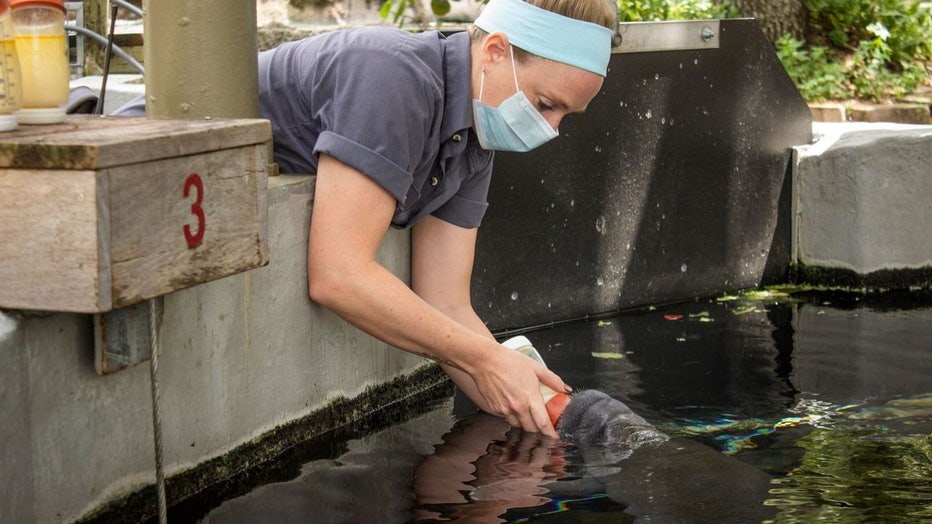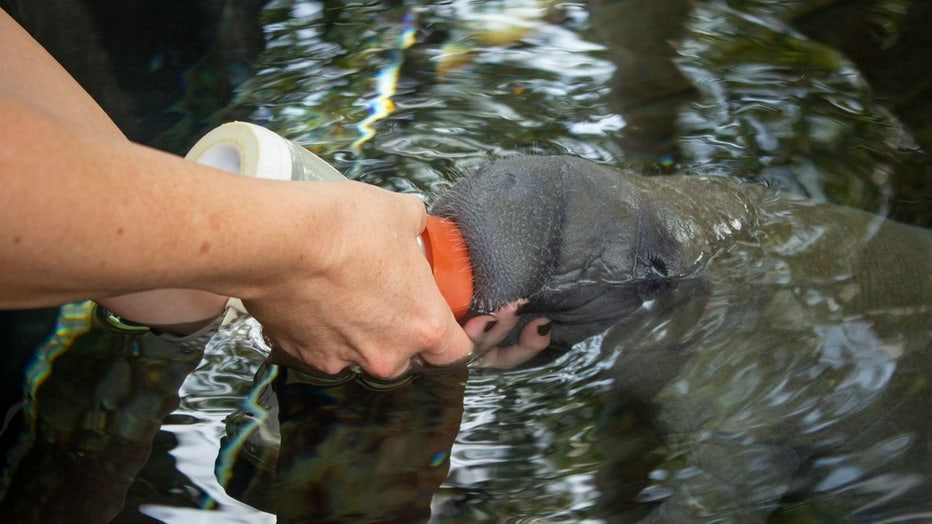ZooTampa releases rehabilitated manatee into Gulf of Mexico after treating for red tide toxicity

Staff members get ready to release Baylo back into the wild. (Photo: ZooTampa)
TAMPA, Fla. - ZooTampa has released a manatee back into the Gulf of Mexico after treating the sea cow for red tide toxicity for two months.
The zoo said it released Baylo back into the water at TECO's Manatee Viewing Center on Thursday.
According to the facility, the sea cow had been rescued back in October by the Florida Fish and Wildlife Conservation Commission and brought to ZooTampa's Manatee Critical Care Center suffering from red tide toxicity.
Baylo weighed just 500 pounds when he arrived at the zoo, but after two months of care, he gained 45 pounds -- becoming the zoo's 12th manatee released this year, and the 288th since the critical care facility opened in 1991.

Staff at the zoo's Critical Care Center bottle-feed calves around the clock. (Photo: ZooTampa)
RELATED: Florida wildlife officials looking for long-term solutions to record manatee deaths
"It’s a great day when we can release our patients," said Dr. Cynthia Stringfield, vice president of animal health, conservation and education at Zoo Tampa. "All of the long days and nights are worth it when we see them swim safely back in Florida waters."
The zoo's Critical Care Center is one of only four such facilities in the U.S., they say their staff has been working around the clock to save manatees throughout 2021 -- the deadliest year on record for Florida's sea cow population.
As of Dec. 3, Florida has had 1,038 manatee deaths this year. That's up from 498 deaths in 2020, 452 in 2019, and 746 in 2018, according to FWC. The previous record was 830 set back in 2013 because of a red tide outbreak.

Piccolina getting bottle-fed (Photo: ZooTampa)
A majority of the 2021 deaths have been attributed to declining seagrass on Florida's east coast. Conservationists say manatees live off seagrass, but algae blooms are killing off their food, along with more pollution from fertilizer runoff.
RELATED: Baby manatee is the smallest rescued orphan calf ZooTampa has ever treated
ZooTampa says it has taken in 29 manatees suffering from malnutrition, red tide toxicity, watercraft injury and other illnesses.
They are also currently caring for four orphaned calves, including the tiniest orphan calf the hospital has ever treated.

Piccolina getting bottle-fed (Photo: ZooTampa)
Named Piccolina, which means "little one" in Italian, the manatee baby weighed just 44 pounds when she arrived at the zoo's Critical Care Center back in August. She had been rescued from the Gulf of Mexico near Venice, with no mother in sight.
She gets bottle-fed every four hours, and has more than doubled her weight to 121 pounds, according to the zoo. But she still has a long way to go: manatees must grow to about 600 pounds before they are ready to be released back into the wild.

